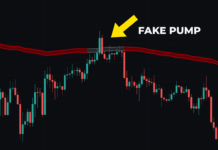In an increasingly unpredictable world, the role of executive protection has evolved from a luxury to a necessity for many organizations and individuals. As threats continue to grow in complexity, it becomes imperative to not only invest in protective measures but also to ensure those measures yield tangible results.
Maximizing the effectiveness of executive protection programs goes beyond hiring the right personnel; it requires a holistic approach that includes risk assessment, situational awareness, and specialized bodyguard training. Advanced training modules focusing on defensive tactics, threat mitigation, close protection skills, and emergency response are critical in preparing bodyguards to handle a wide range of scenarios. By integrating these training elements, organizations can significantly enhance their protective measures, strengthen their defenses, and ensure the safety of key personnel.
Whether it’s through leveraging technology, fostering communication, or engaging in continuous training, the goal remains clear: to build a robust framework that anticipates challenges and mitigates risks.
Understanding the Core Principles of Executive Protection

Understanding the core principles of executive protection is essential for crafting highly effective security strategies that cater specifically to high-profile individuals. At its heart, executive protection transcends mere physical safety; it encompasses risk assessment, threat analysis, and the careful orchestration of logistics to create a protective environment.
This multidimensional approach not only considers the immediate dangers but also anticipates potential vulnerabilities in both personal and professional spheres. Communication is paramount—agents must maintain an open dialogue with their clients while remaining discreet, adapting to evolving situations seamlessly.
Moreover, fostering a culture of awareness and preparedness extends beyond the protective team, equipping clients with the knowledge to navigate their surroundings confidently. In essence, a nuanced understanding of these fundamental principles ensures that executive protection programs not only shield individuals from threats but also empower them to flourish in their endeavors.
Assessing Threat Levels and Vulnerabilities

Assessing threat levels and vulnerabilities is paramount in crafting a robust executive protection program. It begins with a meticulous evaluation of potential risks, from everyday nuisances to existential threats.
Identifying the unique vulnerabilities of the individual or organization—be it due to location, public profile, or past incidents—forms the foundation of a proactive security strategy. However, this assessment is not merely a checklist; it requires an ongoing commitment to adapt to the evolving landscape of threats.
Consider the interplay of factors such as geopolitical shifts, social unrest, and technological advancements, all of which can fluctuate swiftly and unexpectedly. Importantly, engaging with intelligence sources and conducting regular security drills can further illuminate potential gaps in protection, ensuring that your approach remains as dynamic as the threats themselves.
Ultimately, understanding these nuances can empower decision-makers to tailor their executive protection programs more effectively, fostering an environment where safety is a priority, not an afterthought.
Tailoring Protection Plans to Individual Profiles

Tailoring protection plans to individual profiles is paramount in enhancing the effectiveness of executive protection programs. Each executive brings a unique set of risks, preferences, and operational environments that require a bespoke approach.
For instance, a CEO in the tech industry may face different threats compared to a high-profile figure in finance or politics. This necessitates a thorough assessment of potential vulnerabilities, lifestyle habits, and even travel patterns, which should shape the security strategies implemented.
Additionally, the integration of personal input from the executive can lead to a more cohesive plan—one that resonates with them on a personal level. Emphasizing flexibility within these plans ensures they can adapt to unforeseen circumstances, maintaining a robust yet agile protective posture.
Such a personalized touch not only bolsters safety but also builds trust and confidence in the security team, ultimately maximizing the effectiveness of the entire program.
Conclusion
In conclusion, maximizing the results from executive protection programs requires a multifaceted approach that encompasses thorough risk assessments, strategic planning, and continuous evaluation of protocols. Investing in professional bodyguard training is essential, as it equips security personnel with the skills and knowledge needed to effectively navigate complex situations and ensure the safety of clients. By fostering clear communication, collaboration among team members, and adhering to industry best practices, organizations can create a robust security framework that not only protects individuals but also upholds the integrity of the entire program.
Ultimately, a proactive and well-coordinated executive protection strategy can significantly enhance safety and security outcomes, allowing leaders to focus on their responsibilities with peace of mind.







